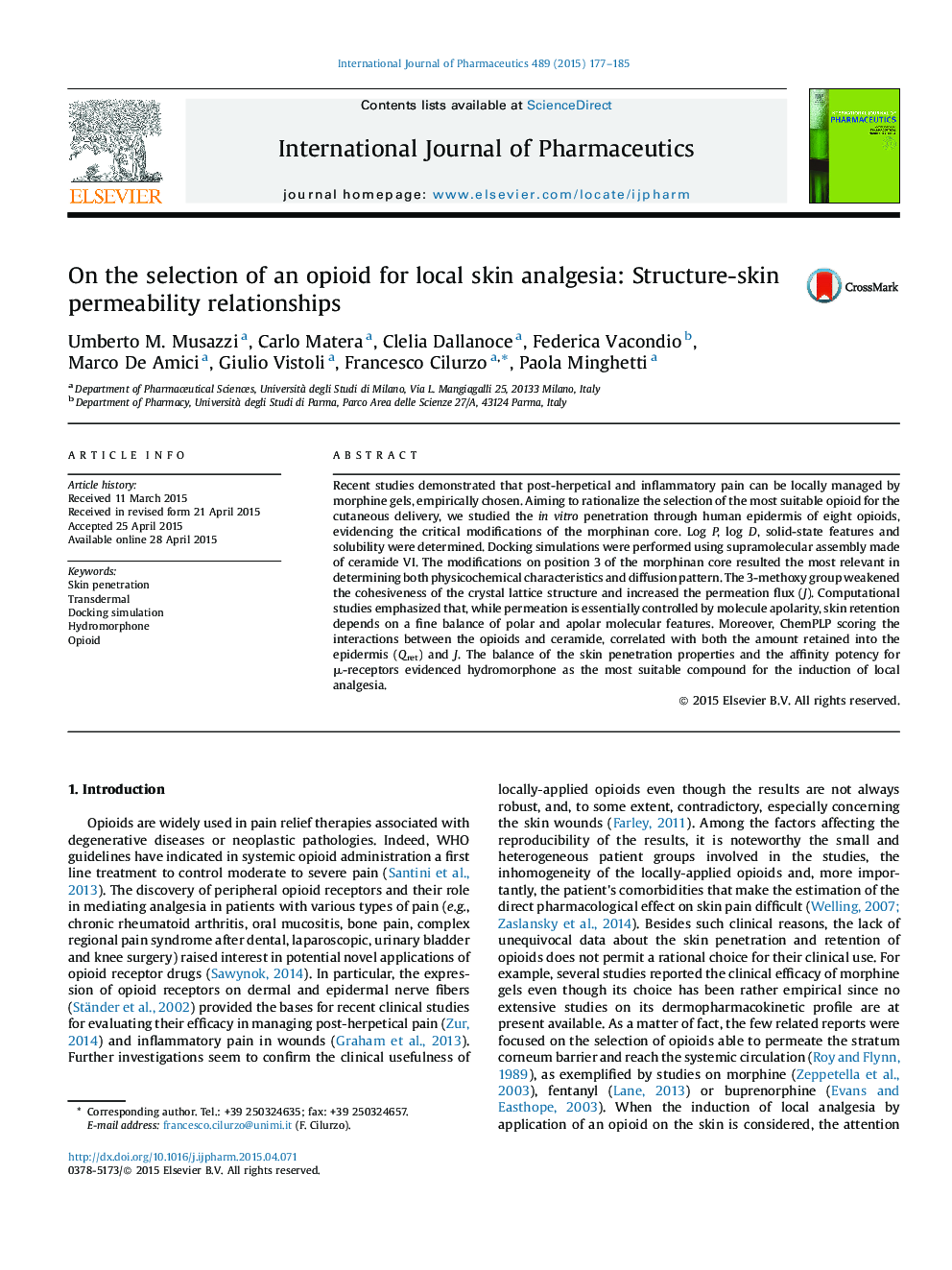| Article ID | Journal | Published Year | Pages | File Type |
|---|---|---|---|---|
| 2501381 | International Journal of Pharmaceutics | 2015 | 9 Pages |
Recent studies demonstrated that post-herpetical and inflammatory pain can be locally managed by morphine gels, empirically chosen. Aiming to rationalize the selection of the most suitable opioid for the cutaneous delivery, we studied the in vitro penetration through human epidermis of eight opioids, evidencing the critical modifications of the morphinan core. Log P, log D, solid-state features and solubility were determined. Docking simulations were performed using supramolecular assembly made of ceramide VI. The modifications on position 3 of the morphinan core resulted the most relevant in determining both physicochemical characteristics and diffusion pattern. The 3-methoxy group weakened the cohesiveness of the crystal lattice structure and increased the permeation flux (J). Computational studies emphasized that, while permeation is essentially controlled by molecule apolarity, skin retention depends on a fine balance of polar and apolar molecular features. Moreover, ChemPLP scoring the interactions between the opioids and ceramide, correlated with both the amount retained into the epidermis (Qret) and J. The balance of the skin penetration properties and the affinity potency for μ-receptors evidenced hydromorphone as the most suitable compound for the induction of local analgesia.
Graphical abstractFigure optionsDownload full-size imageDownload high-quality image (174 K)Download as PowerPoint slide
